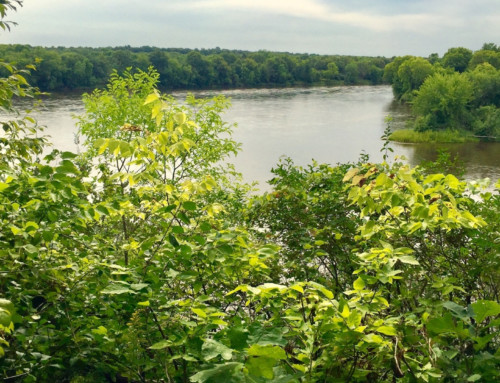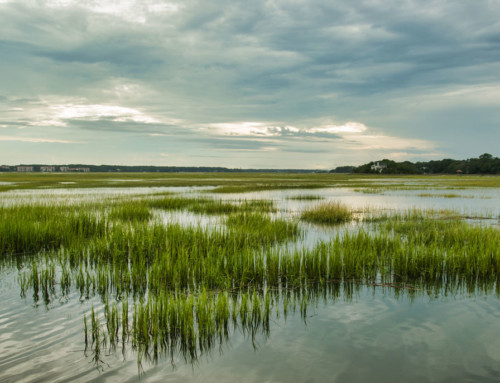Looking at the vast network of tools we have established in Virginia for the protection of our land, there is no more powerful tool than the conservation easement. Created in the early 1960s, conservation easements held by various land trusts now blanket the Piedmont Valley and beyond. Arms linked, landowners and land trusts stand as a solid line of defense against the development of precious open space.
The conservation easement was developed to last in perpetuity. But as the world faces a tsunami of change, new challenges face the land trusts that hold and defend these easements. Are we ready for the next 10 years? 50 years? 100 years? And beyond?
Recently, the leaders of the conservation community weighed in to relate the challenge of change they face. Rest assured, they are prepared, but we should all feel ready to support them. The movement began in our community. The future is firmly rooted in our property. Each of us plays a role in their success. You should know what we all face.
The Virginia Conservation Easement
Bob Lee led the Virginia Outdoors Foundation as Executive Director for 9 years beginning in 2005. The VOF was created by the General Assembly in 1966 and protects more than 860,000 acres. Lee explains that Senator FitzGerald Bemiss and attorney George Freeman set the agenda in motion recommending formation of the VOF as a state land trust where private philanthropists could donate valuable property for protection in perpetuity.
For the donation, Virginia offers the most attractive reward of any state in the nation. In addition to federal tax deductions, our state offers generous state tax deductions that are transferrable. Even if you don’t have significant VA state tax, the credits may be sold to those who do. It’s a very attractive reward, but Lee warns, the statute is subject to legislative change if we don’t continue to offer the public a significant benefit in return.
Related Post: Virginia Improves Access to Carbon Market
Needless to say, the Virginia model grew quickly. After VOF, more than 22 land trusts (15 are accredited by Land Trust Alliance) followed, encouraging a dense network of protection across more than a million acres of Virginia. It has been especially popular in our local region restricting development on private properties, historic landmarks, state parks, and more. While the program is one of the nation’s most successful, Lee warns that we must remain vigilant as we protect the conservation easement that protects us.
Lee points to the Virginia Open Space Land Act, which authorizes conservation easements granted to public agencies, such as localities and the VOF. Because these easements are held by government agencies, they are not subject to eminent domain by other state agencies (VDOT) or public utilities. While possible for an easement held under the Act to be released (which would violate federal tax rules,) the requirements for such a release by the VOF, or another governmental holder, are extremely rigorous and designed to replace any released easement with new easements of equal or greater economic and conservation values. Such restrictions on release help ensure that a landowner’s commitments to conservation are honored, even in the face of demands for new roads, power lines, or other public projects.
Chris Miller is Executive Director of the Piedmont Environmental Council. Founded in 1972, the PEC covers nine counties and holds more than 12,400 acres in conservation easement. One of the most effective community-based environmental groups in the nation, PEC protects our land, historical landmarks, air and water quality, promotes building smart transportation choices while protecting the scenic byways, viewsheds and public access to it all. Miller knows the future will involve a compromise between zoning, landowners and land trusts. He is just as resolved to protect, but like Lee, wonders if our reluctance to accept public need will result in legislative action reducing the state tax benefit.
Sally Price steers the Land Trust of Virginia holding more than 200 easements in the popular land trust. She agrees with Lee and Miller, but her concerns are based around the perpetual stewardship obligation entailed in holding a permanent conservation easement and the costs of enforcing the protections imposed by those easements, especially as land changes hands. The pandemic has created a mushroom of sales in our area. Will new owners fully understand the deed restrictions that come with their property and embrace the responsibility unquestioned?
Stephen Small was the attorney-advisor in the Office of the Chief Counsel of the IRS in the 60s and wrote the original federal income tax regulations on conservation easements. Small sees opportunity for landowners in the emerging natural markets. By growing trees and improving degraded stream beds, landowners can reap valuable benefit from nutrient credits, mitigation credits, even carbon credits. The work directly improves water and air quality and is consistent with the language of most all conservation easements. This allows landowners an opportunity to earn from their land while doing the right thing for the ecology. Is it time for conservation easement language to specifically encourage these programs?
In the Future
Marie Ridder is now 96. Over her dedicated and successful career, Ridder has worked for numerous federal and state agencies, the VOF, the PEC, and the Chesapeake Bay Foundation, too. She was one of the first conservation easement donors in VA. Clear as a bell, she agreed with all of the above. When I asked her advice for the future, she said, “Two words Mr. Banner … birth control!” Since all of the problems addressed relate to a growing population, who can argue with her? Loudoun County has exploded by more than 30% in 10 years. Simply, more people from the city want more access to the countryside, and conservation easements and land trusts protect our natural and historic assets for all to appreciate.
Sum total? While I feel confident the protections devised in the conservation easement will stand the test of time, our work is not done. We have much to lose, but far more to gain.







